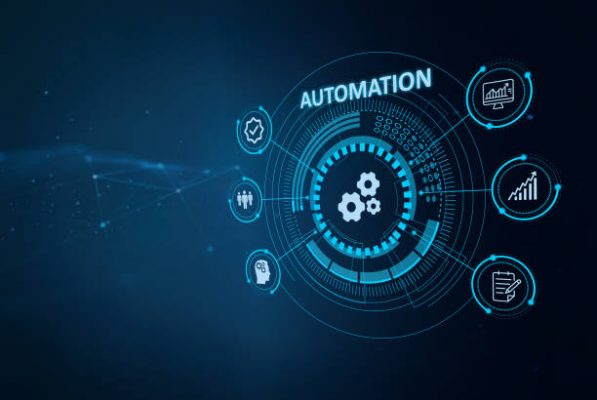
- April 14 2025
- SFI Solution Team
The Future of RPA : Combining AI, API, and Automation
In the rapidly changing realm of digital transformation, Robotic Process Automation (RPA) has become a fundamental technology, enabling organizations to optimize their operations, lower expenses, and enhance efficiency. Nevertheless, the future of RPA transcends mere automation of repetitive tasks. It now involves the integration of Artificial Intelligence (AI), the utilization of Application Programming Interfaces (APIs), and the development of intelligent automation ecosystems that deliver substantial business value.
As we enter a new phase of hyperautomation, it is essential to examine how the integration of RPA, AI, and APIs is transforming business process automation and what implications this holds for companies aiming to gain a competitive edge.
What is RPA?
Robotic Process Automation refers to the use of software bots to automate rule-based, repetitive tasks traditionally performed by humans. These tasks include data entry, invoice processing, report generation, and more. RPA tools mimic human actions across digital systems without the need for complex system integration.
While RPA has delivered quick wins and ROI across industries, it has traditionally been limited to structured data and deterministic processes. This is where AI and APIs step in.
The Evolution of RPA : From Task Automation to Intelligent Automation
1. From Rule-Based to Cognitive Automation
Traditional RPA solutions are rule-based, meaning they follow specific instructions and cannot adapt to changes or unstructured data. By integrating Artificial Intelligence (AI)—including machine learning, natural language processing (NLP), and computer vision—RPA becomes capable of :
-
Understanding semi-structured and unstructured data (e.g., emails, documents, images)
-
Making context-aware decisions
-
Continuously learning and improving over time
This evolution transforms RPA from simple automation to Intelligent Automation (IA), capable of handling complex, end-to-end business processes.
2. APIs as the Digital Nervous System
APIs (Application Programming Interfaces) enable seamless communication between software systems. Unlike RPA bots that mimic user behavior at the UI level, APIs offer direct, efficient, and reliable system-to-system interactions.
When RPA is combined with APIs :
-
Bots can bypass the UI and directly interact with enterprise systems
-
Workflows become more scalable and resilient
-
Integration with cloud services, third-party platforms, and internal tools becomes frictionless
Together, APIs and RPA enable hybrid automation models, blending the agility of bots with the robustness of API integrations.
Benefits of Combining AI, API, and RPA
1. Enhanced Efficiency and Accuracy
AI-powered RPA bots can handle vast amounts of unstructured data, make informed decisions, and learn from outcomes—significantly increasing process accuracy and speed.
2. Scalability and Flexibility
API-driven RPA can easily scale across systems and departments, supporting both front-end and back-end processes while minimizing the risk of breakage from UI changes.
3. End-to-End Process Automation
By integrating AI and APIs, businesses can automate entire workflows—from data extraction and decision-making to system updates and customer communication—without human intervention.
4. Better Customer Experience
With AI interpreting customer data and APIs ensuring smooth information flow across systems, RPA can deliver personalized, timely, and consistent customer interactions.
5. Reduced Operational Costs
Intelligent automation reduces manual workload, minimizes errors, and optimizes resource allocation—leading to substantial cost savings.
Use Cases : The Future in Action
1. Intelligent Document Processing (IDP)
AI-enhanced RPA can extract, interpret, and validate data from invoices, contracts, and forms using OCR and NLP. APIs can then push this data into ERP or CRM systems in real time.
2. Customer Support Automation
Chatbots powered by AI and RPA can handle customer queries, update ticketing systems via APIs, and escalate issues only when necessary—drastically improving resolution time and customer satisfaction.
3. Finance and Accounting
From reconciliations and journal entries to compliance and audit processes, AI + RPA bots can analyze financial data while APIs ensure seamless data exchange with accounting platforms.
4. HR Onboarding
RPA bots can collect candidate information, validate it using AI, and update HRMS and payroll systems through API calls—automating the entire employee onboarding process.
Preparing for the Future of RPA
To harness the full potential of AI, API, and automation, businesses must :
1. Adopt a Strategic Approach
Identify processes that can benefit from intelligent automation and create a roadmap aligning with business goals.
2. Invest in the Right Tools
Choose RPA platforms that offer built-in AI capabilities, API support, and orchestration features for managing complex workflows.
3. Foster a Culture of Innovation
Encourage collaboration between IT, operations, and business units to promote continuous improvement and innovation through automation.
4. Prioritize Governance and Security
As automation scales, ensure compliance, data privacy, and security protocols are embedded within your automation architecture.
The Road Ahead : Hyperautomation and Beyond
According to Gartner, hyperautomation—the combination of advanced technologies like RPA, AI, APIs, and low-code platforms—will be key to achieving digital excellence in the coming years.
This next phase isn’t just about automating more tasks, but about creating a fully integrated digital workforce that collaborates with humans to deliver superior outcomes.
The future of RPA is not just robotic—it’s intelligent, connected, and transformative.
Conclusion
The convergence of AI, API, and RPA is fundamentally transforming how organizations operate. It’s enabling businesses to move beyond simple automation and into a realm where processes think, learn, and evolve.
By embracing this triad of technologies, companies can unlock new levels of productivity, agility, and innovation—positioning themselves for sustained success in the digital age.
Looking to future-proof your business with intelligent automation?
Partner with experts who understand the synergy of AI, API, and RPA—and transform your operations from the inside out.
Previous Post